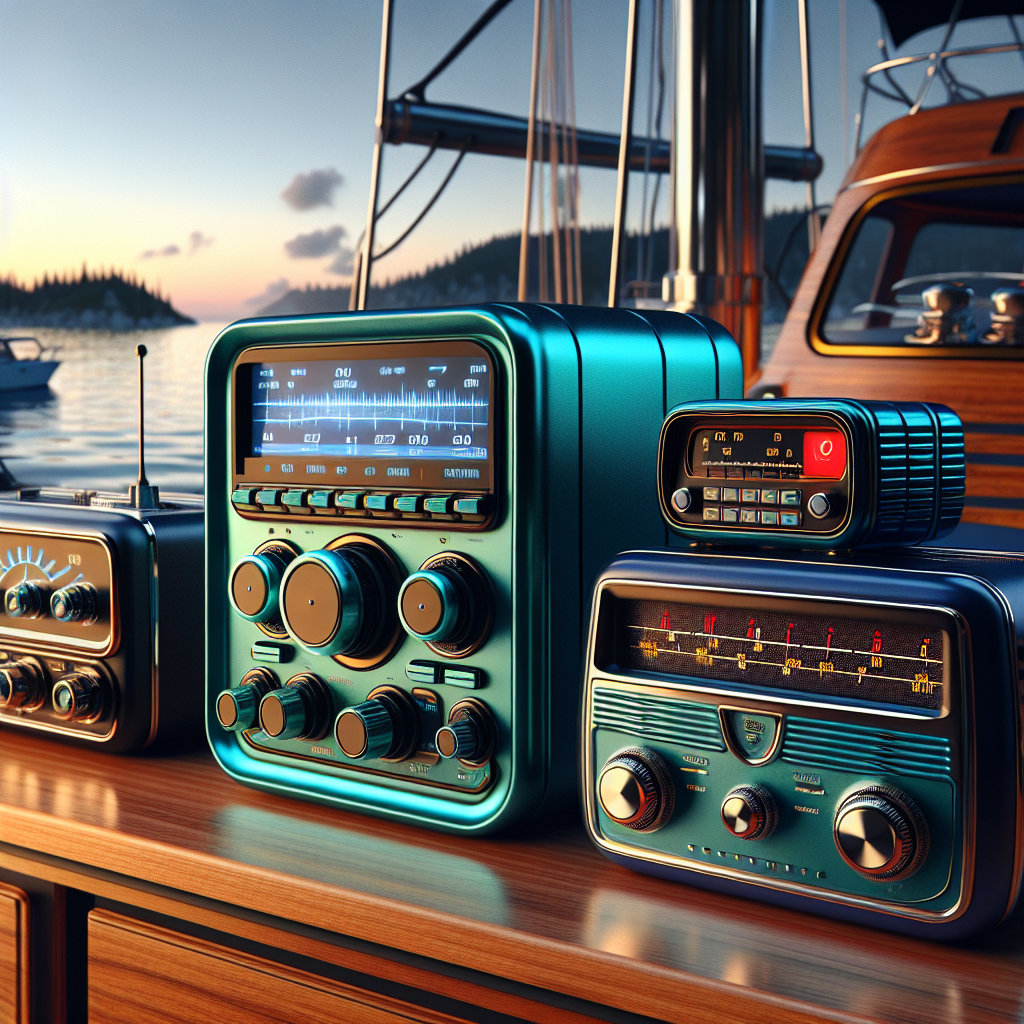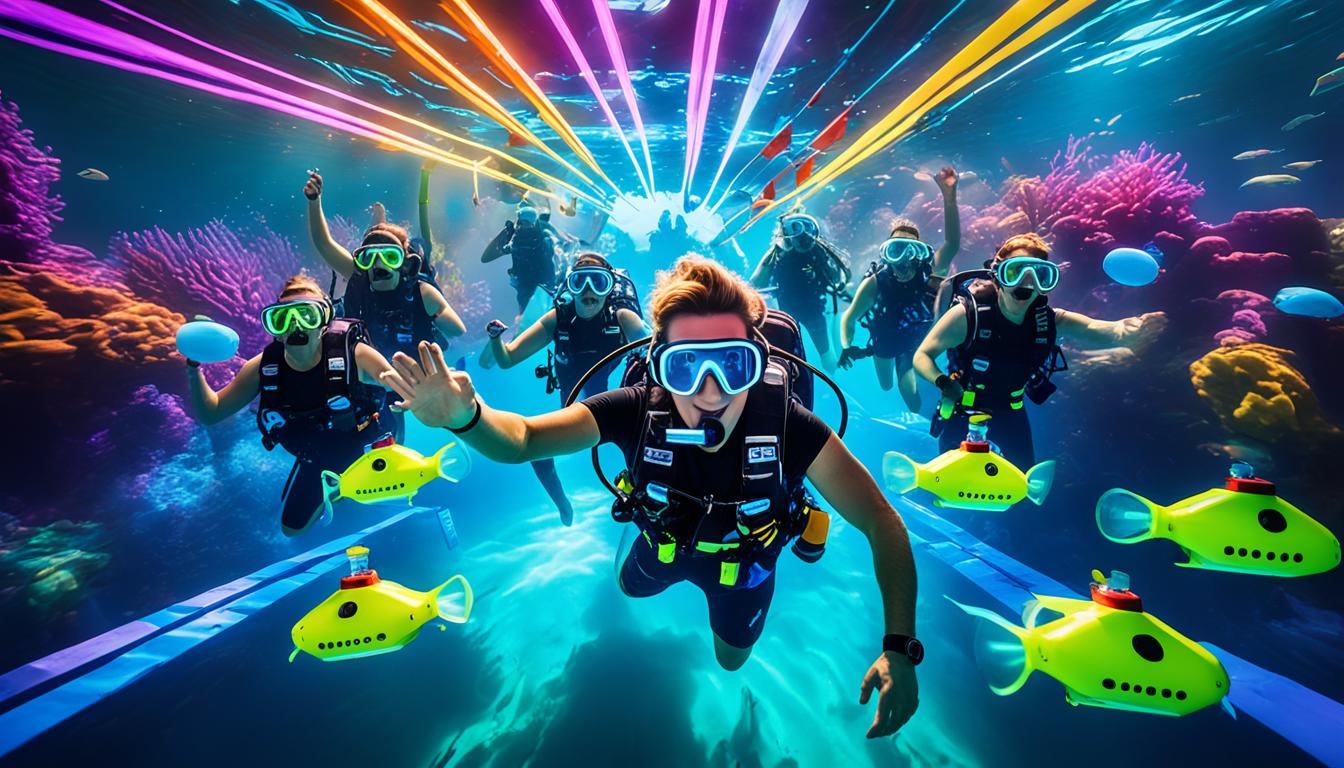
Key Takeaways
- Understanding marine radio features is crucial for effective on-water communication.
- Digital Selective Calling (DSC) is a key function for emergency and routine signaling.
- Maritime Mobile Service Identity (MMSI) numbers are essential for identifying your vessel.
- Clear transmission and proper radio etiquette are fundamental for marine radio use.
- Choosing the right marine radio depends on your boating style and communication needs.
Cutting Through the Noise: How Advanced Marine Radios Are Transforming Maritime Communication
When you’re out on the open water, whether you’re navigating a crowded channel or facing an unexpected storm, your marine radio isn’t just a piece of equipment; it’s your lifeline. With advanced marine radios, we’re not just talking about making calls; we’re ensuring that each word transmitted is a clear, reliable bridge to safety, coordination, and efficient maritime operations.
Upgrading Traditional Methods
Let’s face it, traditional marine communication methods have their limitations. You need to be prepared for more than just shouting distance. Advanced marine radios break those barriers with features like GPS integration, DSC, and AIS (Automatic Identification System) capabilities, giving you the confidence to navigate and communicate with precision.
Ensuring Safety with Seamless Contact
Most importantly, safety is non-negotiable on the water. An advanced marine radio with DSC allows you to send a distress signal at the press of a button, instantly relaying your position to nearby vessels and rescue authorities. It’s not just about having a radio; it’s about having the right radio that acts fast when every second counts.
The Evolution of Marine Radios
From Morse Code to Digital Age: A Brief History
Marine communication has come a long way from the days of Morse code over crackly lines. We’ve transitioned from analog to digital, enhancing clarity and expanding the possibilities for what we can do with a marine radio. Remember, the goal is not just to communicate, but to do so effectively and efficiently.
The Technical Leap: Understanding Modern Marine Radios
Today’s marine radios are marvels of technology. They integrate advanced features like DSC, which allows you to connect directly with another vessel or shore station without broadcasting to everyone. Besides that, modern radios can also automatically broadcast your location and identification, thanks to the integration with global positioning systems (GPS).
Choosing the Right Marine Radio for Your Vessel
Key Features to Consider
- Power output: More power means a stronger signal and wider reach.
- Waterproof rating: Essential for durability in a marine environment.
- GPS integration: For accurate location tracking in distress situations.
- DSC capability: A must-have for emergency signaling and routine calls.
- AIS reception: To see and be seen by other vessels equipped with AIS.
Because choosing the right marine radio is about matching your needs to the radio’s capabilities, you’ll want to consider these features carefully. For example, if you’re heading offshore, a radio with high power output and AIS reception could be crucial for your safety.
Compatibility and Installation Tips
Before you purchase a marine radio, ensure it’s compatible with your vessel’s power system and available space. Installation is straightforward when you follow the manufacturer’s instructions, but don’t hesitate to consult with a professional if you’re unsure. Proper antenna placement is also critical for optimal performance, so take the time to get it right.
Mastering Marine Radio Operations
To truly harness the power of advanced marine radios, you need to master their operations. Familiarize yourself with the radio’s functions in calm conditions, so you’re ready when the seas aren’t as forgiving. It’s like knowing the ropes before you set sail – essential for smooth sailing.
Remember, practice makes perfect. Regularly testing your equipment ensures that you are ready to handle it during an emergency. Run through drills, check battery life, and keep your radio’s firmware up-to-date. These small steps make a big difference in critical moments.
Example: A seasoned captain once told me, “The sea tests you in ways you can’t imagine. Your radio is your voice when the waves try to silence you. Learn it like the back of your hand.”
Now, let’s dive into the specifics. Clear communication is your goal, and here’s how you can achieve it:
Basic Procedures for Effective Communication
First, always listen before you transmit to avoid interrupting ongoing communication. Speak clearly, concisely, and slowly. Use standard marine vocabulary and phonetic alphabet to avoid misunderstandings. And remember, your marine radio is not for idle chatter; it’s a tool for clear, necessary communication.
Understanding Digital Selective Calling
Digital Selective Calling (DSC) is a lifesaver, quite literally. It’s a feature that lets you send a preformatted distress message at the push of a button. The message includes your identification, the nature of your distress, and your location if connected to a GPS. It’s essential to have your DSC function set up correctly with your MMSI number registered, so help knows exactly where to find you.
Navigating Through Channels and Frequencies
There’s a channel for everything on the water. Channel 16, for instance, is the universal calling and distress channel. But once initial contact is made, move to a working channel to keep 16 clear for others. Know which channels are for routine calls, which are for port operations, and which are for maritime safety information.
Staying Connected: Advanced Marine Radios in Action
Advanced marine radios are not just about calling for help; they’re also about staying connected. With features like AIS, you can monitor traffic around you, avoiding potential collisions and navigating busy waterways with ease. It’s about being aware of your surroundings and communicating your presence to others.
Moreover, with the integration of Bluetooth and other wireless technologies, your marine radio can connect to other devices on your vessel, making it a central hub for all your communication needs. You can keep your smartphone safely stowed away while still staying connected to the world.
Real-World Scenarios: When Marine Radios Save the Day
Imagine being caught in a sudden fog bank, visibility zero. With your AIS and DSC-enabled radio, you can see other vessels on your radio’s display and send out alerts without seeing them with your eyes. It’s these kinds of situations where advanced marine radios prove their worth, acting as your eyes and ears in the midst of uncertainty.
Case Studies: Enhancing Fleet Communication
Take, for example, a fishing fleet that equipped their vessels with advanced marine radios featuring GPS and AIS. The fleet could coordinate their movements, avoid hazards, and improve their catch efficiency. The radios became more than just a means to talk; they became a strategic tool for business.
In another instance, a sailing regatta used advanced marine radios to keep all participants informed of weather changes, race instructions, and safety messages. The radios ensured that everyone was on the same page, enhancing the experience and safety of the event.
Overcoming Obstacles: Troubleshooting Common Marine Radio Issues
Even with advanced technology, issues can arise. Interference, for example, can be caused by nearby electronics or even the weather. To minimize this, ensure your radio is properly installed, with the antenna clear of obstructions and away from other electronic devices.
Interference and Signal Loss
If you’re experiencing signal loss or weak transmissions, check your connections and antenna. A damaged antenna or a loose connection can severely impact your radio’s performance. Also, be mindful of your surroundings; tall structures and natural features can block signals.
Power and Battery Challenges
Power issues are often the culprit behind radio failures. Regularly inspect your power sources and connections. If your radio operates on batteries, keep spares on hand and check their charge levels before setting out. A radio without power is like a sail without wind – utterly useless.
Moving Forward: What’s on the Horizon for Marine Communication?
As we look ahead, we can expect marine communication to become even more integrated and user-friendly. The rise of satellite communication and the potential for internet connectivity at sea are game-changers. We’re moving towards a future where being out of touch, even in the middle of the ocean, will be a thing of the past.
The ongoing development of marine communication technology promises to enhance safety, navigation, and operational efficiency. With continuous improvements, we can anticipate more robust, reliable, and feature-rich marine radios that will further break down communication barriers on the water.
Power and Battery Challenges
Ensuring your marine radio has a reliable power source is as important as knowing how to use it. A common issue mariners face is battery depletion, which can lead to a complete communication blackout. To avoid this, always check your battery levels before departure and consider carrying a backup battery or power source.
Moreover, routine maintenance of your radio’s power connections can prevent unexpected power failures. Corrosion or loose wiring can interrupt power supply, so it’s wise to inspect these regularly. After all, a well-powered radio is your best ally during voyages.
Moving Forward: What’s on the Horizon for Marine Communication?
The marine communication landscape is on the cusp of a new era. With advancements in satellite technology and the advent of the Internet of Things (IoT), the future holds a more connected and accessible maritime network. Imagine a world where your marine radio could provide real-time weather updates, sea traffic information, and even internet connectivity.
Emerging Technologies in Marine Radios
The integration of artificial intelligence and machine learning into marine radios is not far off. These technologies could revolutionize how we interpret data, predict weather patterns, and even automate distress signals. The potential for smart radios that learn from your habits and adapt to your needs could redefine marine safety and communication.
Regulations and Compliance: Staying Ahead
With new technologies come new regulations. It’s crucial to stay informed about the latest communication protocols and safety standards. Compliance with international maritime laws ensures not only the legality of your voyages but also the safety of your crew and vessel. As technology evolves, so too should our understanding of these regulations.
Frequently Asked Questions (FAQ)
Marine radios are a cornerstone of maritime safety, but they come with a host of questions. Here are some answers to the most common queries:
How do I obtain a Maritime Mobile Service Identity (MMSI) number?
To get an MMSI number, you need to apply through your national licensing authority or a recognized organization. This unique number is crucial for using DSC functions on your marine radio and for identification in emergency situations. Once obtained, make sure to program it into your radio correctly.
What is the difference between VHF and SSB marine radios?
VHF (Very High Frequency) radios are typically used for short-range communication, ideal for inland waters and near-shore areas. SSB (Single Side Band) radios, on the other hand, are for long-range communication, suitable for blue-water cruisers who venture far offshore. Each serves a specific purpose based on your cruising needs.
How do I perform a radio check on a marine VHF radio?
To perform a radio check, simply tune to a non-distress channel designated for radio checks, and request a radio check, stating your vessel’s name and location. Wait for a response from another vessel or shore station to confirm your signal’s clarity and strength.
Can advanced marine radios improve GPS functionality?
Yes, many modern marine radios come with integrated GPS, which can enhance the accuracy of your location data. This integration is particularly useful for DSC-equipped radios, as it allows for precise location transmission in distress signals.
What steps should I take if my marine radio is not transmitting?
If your marine radio isn’t transmitting, start by checking the basics: ensure the radio is turned on, the volume is up, and the antenna is properly connected. Check the power source and battery life. If these are all in order and the issue persists, consult the radio’s manual for troubleshooting or contact a professional for assistance.






